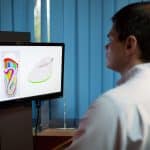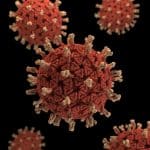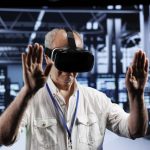In recent years, a technological revolution has swept across the healthcare sector, particularly in the field of dermatology. Advanced tools and techniques are now used to identify skin cancer at its earliest stages. Machine learning has proven to be a game-changer in this process. Among the most recent advancements is the ability of these advanced algorithms to identify skin cancer through image-based methods. This article is designed to provide an in-depth understanding of how machine learning is revolutionizing the early detection and diagnosis of skin cancer.
Machine Learning and its Role in Skin Cancer Diagnosis
Machine learning, a subset of artificial intelligence, refers to a system’s ability to learn and improve from experience without explicitly programmed instructions. By accessing vast amounts of data, these systems learn to recognize patterns and make predictions, which are of particular value in medical diagnosis.
A lire aussi : How to Effectively Reduce Single-Use Plastic in UK Coastal Communities?
When it comes to skin cancer, early detection is crucial. Dermatologists rely on visual examinations to identify suspicious skin lesions. However, the accuracy of this method can vary. Machine learning has the potential to augment the capabilities of dermatologists by providing an additional, highly accurate tool for the early detection of skin cancer.
Machine Learning Techniques for Image-Based Cancer Detection
Machine learning operates using algorithms trained on large datasets. In the context of skin cancer, these algorithms use a vast number of skin lesion images. They learn to classify these images based on the presence or absence of cancerous cells, a method known as image-based classification.
Avez-vous vu cela : What Are the Top Sustainable Travel Destinations for Eco-Conscious Tourists?
Skin lesion images can be obtained from standard digital photographs or dermatoscopic images, which provide greater detail. The images are then processed through deep learning algorithms, a specific type of machine learning, to identify patterns suggestive of malignancy. These deep learning techniques employ artificial neural networks, which mimic the human brain’s functioning, to analyze and classify the images.
This method of image-based cancer detection has proven to be highly accurate. In fact, a study conducted by Esteva et al., published on Crossref and cited by multiple scholars, demonstrated that a deep learning algorithm classified skin cancer with a level of competence comparable to dermatologists.
The Role of Melanoma Images in Machine Learning
Melanoma, the deadliest form of skin cancer, is particularly difficult to diagnose in its early stages. The subtlety of its initial presentation often leads to late detection, making it more difficult to treat. Machine learning has the potential to remedy this issue by enabling the early detection of melanoma.
When trained on melanoma images, machine learning algorithms learn to identify the unique characteristics of this type of cancer. These may include irregular borders, uneven color distribution, and changes in the size or shape of a mole. Once the algorithm has learned these characteristics, it can detect them in new images, aiding in early diagnosis.
How Machine Learning Supports Dermatologists
Machine learning is not intended to replace dermatologists. Instead, it serves as a powerful tool that can support dermatologists in their work.
By processing thousands of images, machine learning algorithms can detect patterns that may not be immediately apparent to the human eye. This aids in the early detection and diagnosis of skin cancer, potentially saving lives.
Furthermore, machine learning can ease the workload of dermatologists, who often need to examine numerous skin lesions during a single consultation. By providing a pre-screening, machine learning enables dermatologists to focus on the most suspicious lesions, enhancing their efficiency.
The Future of Machine Learning in Skin Cancer Diagnosis
While machine learning is already making significant strides in skin cancer diagnosis, the potential for future advancements is immense.
As more high-quality skin lesion images become available, machine learning algorithms will continue to evolve and improve. They will become better at identifying skin cancers, including those that are particularly difficult to diagnose.
Moreover, as the technology becomes more readily available and affordable, it is likely to become a standard tool in dermatological practice. This would enhance early detection and diagnosis of skin cancer, leading to better treatment outcomes and improved patient survival rates.
Machine learning is an exciting development in the field of dermatology. By aiding in the early diagnosis of skin cancer, it has the potential to save countless lives. As technology and data continue to evolve, the accuracy and utility of machine learning in skin cancer diagnosis are likely to increase, shaping the future of dermatological practice.
The Practical Application of Machine Learning Techniques
Machine learning techniques, particularly those associated with deep learning and neural networks, have become increasingly important tools in the health sector. In the specific case of skin cancer diagnosis, these techniques are revolutionizing the way we detect and treat the disease.
Deep learning, a subset of machine learning, is a powerful tool that uses algorithms trained on large data sets to make predictions or decisions. These algorithms, often referred to as artificial neural networks, function similarly to the human brain, learning from experience and improving their performance over time.
In the skin cancer diagnosis context, deep learning techniques employ convolutional neural networks (CNNs), a type of neural network particularly effective in processing images. CNNs have shown great promise in classifying skin lesions, a key aspect of skin cancer detection.
Essentially, these networks are trained on thousands of dermoscopic images, learning to differentiate between benign and malignant skin lesions. They can detect subtle changes in the size, color, or shape of a lesion, which might be indicative of skin cancer. Once trained, these networks can classify new images with a high degree of accuracy.
A study published on Crossref PubMed demonstrated that a deep learning convolutional neural network was able to achieve sensitivity specificity rates comparable to experienced dermatologists when classifying skin lesions. This is particularly significant given the crucial role of early detection in improving skin cancer survival rates.
The practical application of machine learning techniques in dermatology is by no means limited to diagnosis. These techniques can also support ongoing patient monitoring and the development of personalized treatment plans. By providing a more accurate and efficient means of diagnosing skin cancer, machine learning is playing a pivotal role in improving patient outcomes.
Conclusion: The Transformative Impact of Machine Learning
The transformative potential of machine learning in the early diagnosis of skin cancer is immense. With its ability to quickly and accurately classify skin lesions, machine learning is set to become an indispensable tool in dermatology.
The ability of machine learning to process vast amounts of data means that it can continually improve its performance, becoming more accurate and more sensitive over time. As more high-quality skin lesion images become available, and as machine learning techniques continue to evolve, the diagnostic capabilities of these systems will only continue to improve.
This ability to learn and adapt, coupled with the capacity to process images with a speed and accuracy that far surpasses human capabilities, is what makes machine learning such a powerful tool. It’s not about replacing dermatologists but providing them with the support they need to make faster, more accurate diagnoses.
As we look to the future, we can expect machine learning to play an increasingly prominent role in the early detection and treatment of skin cancer. By harnessing the power of artificial intelligence, we can improve patient outcomes, save lives, and pave the way for a new era in dermatological practice.
The recognition gained by machine learning in international conferences and the constant citation of its advancements by Google Scholar is a testament to its growing importance in the health sector. It’s clear that the potential of machine learning in cancer diagnosis is not just an academic interest but a practical solution that is already making a significant impact in the real world.
In conclusion, as we continue to refine and improve machine learning algorithms and techniques, we enhance the future of skin cancer diagnosis. This, coupled with the increasing availability of high-quality data, is set to revolutionize the field of dermatology, making skin cancer a less formidable opponent.











